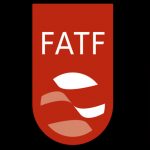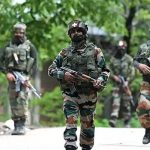Introduction
It is certainly not dubious that from the early years of its Independence itself, Pakistan has sought a sense of achievement by brewing trouble in the Kashmir Valley. It vouches to have a more substantial claim–rooted in religion–on Kashmir and its people than India. Perhaps Ernest Renan’s work ‘What Is A Nation?’-examining the true foundations of a nation, fell upon deaf years in Pakistan. It claims that race, language, religion, do not form a suitable bedrock for a nation in isolation. A nation is a soul immortalised by shared history. The soul of Kashmir possesses the enduring memories of Sufi Islam and Hinduism’s harmonious co-existence. This soul is not very different from that of the rest of India whose soil, ancient art, and literature will reveal tales of religious harmony. The European coloniser, distorting our shared history, rendered this bedrock unsound. Reducing the Turkish, Persian, and Mughal rulers to ‘Muslim invaders’ and ‘temple desecrators’ and labelling the Hindu natives of the land as victims to their atrocities, the colonisers have left us with a skewed idea of our own history. Recent events that further widened the gap between these religious communities shows that our minds are still colonised. On the topic of Pakistan, it is evident that building a nation on the foundations of religion was not Jinnah’s best idea. The theory that the idea of Pakistan was simply Jinnah’s bargaining chip to gain more representation for the Muslim minority at the centre has significant merit to it. Nonetheless, the colonisers are long gone but Hindu-Muslim relationships are still tense owing to the coloniser’s unremarkable analysis of the subcontinent’s history. They may have ceased to rule us but the history that we study, continues to divide us.
Perhaps owing to this divide presented throughout history, Pakistan has been hacking away at the integrity of Kashmiri society. It has done so by introducing a viciously radical variant of Islam, a replacement to its more tolerant Sufi form that was once characteristic of the Kashmir Valley. Pakistan’s efforts have been carried out through various terror outfits and other secessionist organisations that are known to be manipulated, operated, and funded by them. Due to this, Pakistan has received immense backlash from the international community, especially from the Financial Action Task Force (FATF).
A move to safeguard India’s own national interests, the abrogation of article 370 threatens the grip Pakistan thought it had on Kashmir. In keeping with the scrutiny of the world and the post-abrogation landscape, to continue kindling the fire it started in the Valley, and save face simultaneously, Pakistan has had to adopt various new strategies. The purpose of this paper is to examine the various modes employed by Pakistan since the Partition to keep the flame alive with special emphasis on social media for propagating radicalisation. It also aims to highlight the concerted efforts of Pakistan to portray the terrorist activities it has supported as internal insurgency and indigenisation and de-radicalisation of resistance through new virtual terrorist organisations.
A Brief History of Pakistan’s Cross-Border Terrorism in Kashmir
As soon as the dust settled from the storm that was the partition, Pakistan began launching a series of operations; terribly overt attempts to destroy any semblance of tranquillity the valley was home to. In 1947, Operation Gulmarg was launched; the first in a series of unsuccessful operations. The aim was to gain control over the valley through treacherous tactics of a proxy war. In 1964, Pakistan launched another operation, Operation Gibraltar, operating on the same agenda. Following its failure and after a significant period with little malicious activity from their side, Pakistan launched Operation Topac in 1978. Operation Topac, the brainchild of former Pakistani President General Zia-ul-Haq, has close historical ties with the Cold War. To fight Soviet troops when the Soviet Union invaded Afghanistan in 1979, the CIA allegedly created a global Islamist Jihad. It united young Muslims all over the world for this cause and funded the creation of Mujahideen fighters. These funds and weapons were supplied through the Pakistan Army and ISI. This also came as an opportunity for the Pakistan Army and its generals to unjustly divert this new-found expertise and weaponry to the Indian state of Jammu and Kashmir and encourage ‘insurgency’ and terrorism. This would have allowed Pakistan to weaken India’s hold over Kashmir while being easy on the pocket and not blatantly associated with the Pakistan Army and ISI.
The Pakistani Army and ISI have been training Kashmiri youth in camps run by the ISI near the LOC.[1] Moreover, they have also been creating and running various “India-centric militant and secessionist organisations like Hizb-ul-Mujahideen, Hizb-ul-Islam, Allah Tigers, Al-Umar Mujahideen, Harkat-ul-Ansar and Jamaat-e-Islami, Hurriyat Conference, instigating and directing an “insurgency” in J&K, and undertaking terrorist-acts in the state and the rest of India” Jaish-e-Mohammed and Lashkar-e-Taiba, other Pakistan based terrorist groups, have also been created by the ISI.[2] It must be noted that Pakistan has used every front, religious or political, to radicalise the population and create this threat. They have nurtured terrorist organisations that are based in Pakistan with a Kashmiri leadership to cause “strategic-fatigue”.[3] This operation encourages not only local Jihadis but also directs Afghan and other Islamic Jihadis under the belief that infidels are oppressing the Muslim minority.[4]
Propaganda: Hand-in-Glove with Pakistan’s Cross-Border Terrorism
Pakistan’s method of bringing chaos to the valley is not simply limited to the physical acts of terrorism. Kashmir has been set alight both literally and figuratively. While the terror outfits that owe their existence to the ISI have been committing physical acts of terror, Pakistan’s Inter-Services Public Relations (ISPR) wing, its social media presence, and its many cyber soldiers have expanded their reach to a dimension that could not have been scaled with these physical acts alone. When Burhan Wani, a commander of the terror outfit Hizbul Mujahideen, first took to social media with his band of terrorists pictured in an orchard, it was then perhaps that the centrality and unlimited potential of social media in fanning the flames was realised. Considering that it led to a heavy 100-day vicious cycle of protests, his death seems to have made this point even clearer. There is no weapon greater than an effective narrative. Not only does it hold the capacity to distort reality but it also weaponizes each mind that falls prey to its attention-grabbing mechanism. It would be wrong to claim that social media has always been the engine that powers the propaganda machine. In times preceding social media, propaganda would be spread through radio channels. In the villages near the Indo-Pak border, locals would latch on to radio frequencies emanating from India’s friendly neighbourhood. Cashing on this, radio became an effective method of spreading propaganda, till India effectively countered this medium by establishing Radio Kashmir in 1948.
With technological developments, Pakistan’s propaganda machine has certainly upgraded itself and broadened its reach. Their anti-India narrative can now reach any corner of the world, all thanks to social media. According to a report released by Nathaniel Gleicher, Facebook’s head of Cybersecurity Policy, April 2019 saw the removal of 103 Pakistani pages engaging in coordinated inauthentic behaviour:
Today we removed 103 Pages, Groups and Accounts for engaging in coordinated inauthentic behaviour on Facebook and Instagram as part of a network that originated in Pakistan. The individuals behind this activity used fake accounts to operate military fan Pages; general Pakistani interest Pages; Kashmir community Pages; and hobby and news Pages. They also frequently posted about local and political news including topics like the Indian government, political leaders, and military. Although the people behind this activity attempted to conceal their identities, our investigation found that it was linked to employees of the ISPR (Inter-Service Public Relations) of the Pakistani military.[5]
These pages were taken down on account of engaging in coordinated inauthentic behaviour i.e. they would work together to form a network of misrepresentation and misinformation. These accounts and some ‘journalistic’ pages as well, would utilise freelance services such as Fiverr in order to present real looking fake news. Fiverr allows people to send in the ‘news’ and receive a video of it being read by a white Caucasian female posing to be a newsreader.[6] Apart from these covert attempts, the Pakistani Army’s ISPR wing also overtly contributes to the propaganda war through their twitter handle. The official twitter handle of Pakistan army’s ISPR and that of its Director-General Asif Ghafoor have time and again received severe backlash for posting fictitious ‘facts’ and doctored videos. What is more, upon facing criticism from their Indian counterpart, they have acknowledged the false nature of their claims. For instance, a doctored video of an Indian Airforce War veteran was posted by the DG-ISPR admitting to the failures of Indian defence forces after the Balakot strikes. However, under the pressure of immense criticism, Asif Ghafoor was forced to admit that the content has been distorted to mislead the population. Even though these posts and fake accounts are duly taken down periodically, due to their large fan-followings, the damage is somewhat irrevocable. It is safe to say that the public relations wing of the Pakistani Army has indeed overstepped its duties and bounds to lend a hand to ISI in their propaganda war.
Pakistan’s Ill-Fated Encounters with The FATF
In recent times, Pakistan has very rightly found itself under the scanner of the Financial Action Task Force (FATF) and the vigilant eyes of many other international institutions. The FATF is an intergovernmental task force on money-laundering that aims to increase transparency in the financial dealings of governments. It is a Paris based body that also finds curbing financing of terrorist activities within its ambit. Unsurprisingly, this is the very reason that Pakistan has found itself cosying up on the FATF’s grey list. This status does not come with any prominent negative ramifications. It is a disclaimer that financial dealings with Pakistan come with a high risk of losses. Currently, the country–according to the government’s estimations–is bearing damages of “$10 billion per annum” on account of being grey listed.[7] However, this does not even hold a candle to the damage it would suffer from being blacklisted. Grey listing–recognizing the country in question as a safe haven for terrorist organizations–is a cautioning, if not a threat, for them to mend their ways or face the unsparing travesty that is part and parcel of being blacklisted. Pakistan has been grey listed in the eyes of the FATF for the past two years and this is not its first time there (2008, 2012-2015). On the brink of being blacklisted, Pakistan is dangerously dangling by a thread. Failure to take actions, deemed adequate by the FATF would see Pakistan gradually gravitating towards irreparable financial doom. Pakistani Prime Minister Imran Khan remarked that Pakistan would find itself in Iran’s shoes if the blacklisting is not successfully evaded.[8] Pakistan will lose existing foreign deals and collaborations, and foreign funding will most certainly be revoked. Moreover, it would eliminate any scope of future collaborations with International Financial Institutions. The value of the Pakistani Rupee would plummet while the prices of basic commodities will be seen skyrocketing. Suffice to say, it will be a hefty task to bounce back from the injuries the country’s economy will have to bear; to say that staying afloat in such times of peril would be challenging, is an understatement. Pakistan’s Day of Reckoning does not sit too far. The Paris based body is scheduled to review Pakistan’s case and decide its fate in October 2020. The question is, has Pakistan done enough to avoid eternal damnation or rather the consequences of its petty actions?
Evading demotion requires Pakistan to comply with the 27-point action plan given by the FATF. Out of the numerous steps mentioned there, Pakistan was required to level financial sanctions against all the international terrorists identified by the United Nations’ 1267 committee. Moreover, curbing financial support extended to terrorist organisations, enforcement of laws against them, and improving the overall judicial system was also recommended. In addition, the demonstration of the effectiveness of sanctions imposed by them also constituted a crucial point. So far, Pakistan has levelled sanctions against 88 terrorists associated with various terrorist organisations Bank accounts and properties of the 88 terrorists have been seized.[9] With an extended deadline due to the coronavirus pandemic, Pakistan managed to meet most of the points delivering its initial draft to the FATF. However, as of late August, the country was yet to act against “illegal money or Value Transfer Services” that are crucial aides to terrorist organisations.[10]
Pakistan: Approaching Retirement As A Terrorist State?
Despite its efforts to outrun its potential blacklisting, it is simply unbelievable that the State’s actors would post a cease and desist on their many foot soldiers in the valley. Not only is Pakistan under the all-seeing eyes of the anti-terrorism watchdog but India’s move to sever Pakistan’s perceived ties with Kashmir further complicates the matter for them. What further fuels this frustration is the lack of cooperation from the locals to create turmoil. Pakistan was, perhaps, counting on this move to spark local outrage and push more people to take up arms against the Indian government. However, as opposed to the aftermath of Burhan Wani’s death, the security forces exercised careful restraint this time around and no notable uprisings or protests were recorded. The lack of internal outrage might finally make Kashmir an impossible dream for Pakistan. Naturally, it finds it increasingly important to plant this disturbance through terrorism. With the FATF on its case, Pakistan cannot be visibly associated with these terrorist activities. Therefore, in an attempt to secure their grip over Kashmir, Pakistan has created a new virtual terrorist outfit called The Resistance Front (TRF) whose propaganda-filled posters only began cropping up in March 2020. It is a terror outfit that claims to be a product of the Kashmir valley itself. The secular sounding name also attempts to gain sympathies among “global left liberals and human rights activists”.[11] However, it is interesting to note that TRF does not actually exist beyond a computer screen or the virtual sphere. It is simply a front for banned terror outfits such as Lashkar-e-Toiba, Jaish-e-Mohammed, Al-Badr, etc., that are known to have Pakistan based operatives and controllers.
Keeping Pakistan’s run-ins with the FATF and the post-abrogation landscape in sight, “the formation of the group is an attempt to portray it as a local non-Islamic, liberal uprising, thus attempting to provide it with a level of legitimacy and repudiating any ties to Pakistan”.[12] Before the arrival of TRF on the scene, each time a local youth would become active as a militant, social media would be flooded with pictures embossed with the name of the terror outfit and details of said youth. This, however, has seen a sharp decline ever since the emergence of TRF especially in the case of Lashkar-e-Toiba and Jaish-e-Mohammed. This is not to say that the aforementioned terror outfits are losing momentum; rather, it is an attempt to underplay the prominence of terror outfits known to be associated with Pakistan and allow so-called local terror outfits their share of the limelight. In other words, their creation was to lift the pressure and scrutiny Pakistan’s sponsorship of terrorism has received globally.[13] Hence, “Lashkar-e-Taiba, Hizbul Mujahideen and Jaish-e-Mohammed have remained rather on the low since the Pulwama attack in 2019”.[14] In its mere six months of existence, TRF has claimed responsibility for various acts of terror that have actually been carried out by known cadres, even among local people, of the aforementioned terror outfits. Moreover, “the modus operandi and rhetoric of the TRF remain strikingly similar to other pro-Pakistan terrorist outfits”.[15] From the very beginning, this so-called terror outfit’s ties with Pakistan have been undeniable. The very first time this group made it big in major media outlets–six members in possession of unusual amount of weapons captured and interrogated by the J&K Police–it was revealed that the weapons being carried were indeed brought over from Pakistan and smuggled in small portions across the border.[16]
In a counter-terrorist operation in Handwara in May this year that cost the Indian Army dearly, three terrorists were also neutralised. In order to honour their ‘valiant martyrs’ TRF claimed to be involved in this operation. The operation culminated with “two commanders of the group Sajad Ahmed and Abu Anas being killed and later on, Haider, a Pakistani national and known LeT commander, being killed as well”.[17] However, the knowledge of his involvement and death posed a threat to the indigenous status of TRF. Therefore, in order to maintain that facade, in his place a local LeT cadre, was claimed by them as a martyr. Yet, open source intelligence has reason to believe that said local cadre is still alive and thriving. Since The Resistance Front gained obvious terrorist connotations, Pakistan sought to create another outfit called the Peoples’ Anti-Fascist Front (PAFF). The name would suggest it to be an uprising against the alleged fascist policies of the Indian government. Moreover, the name also underplays the religious aspect of it as well–radical Islam that is clearly owed to Pakistan. Similar to TRF, it is simply a name on the virtual domain with very little attributed to them on ground. In recent times PAFF had overshot TRF in terms of their activity. However, in the aftermath of the neutralization of another known local LeT commander in August this year who was active since 2016, the PAFF too has closed shop via a tweet saying “I quit” on their since deleted twitter handle Moaviya Al-Hizbi. This is a near confirmation of the fear that the onscreen PAFF was the handiwork of a close associate of this local commander who has now lost their nerve since their master has perished. It is apparent that through virtual terror groups such as TRF and PAFF, “Pakistan is blatantly aiming at portraying the terror outfit as an indigenous ‘freedom-fighting’ movement in comparison with its other proxies which wear a cloak of Islamist extremism”
Conclusion
Pakistan, through these ‘local terror outfits’ can be seen trying to depict indigenisation and a domestic variant of disturbance in the Kashmir Valley. They are toying with the fine line between terrorism and insurgency through these recent acts. While terrorism is a broader term that includes foreign militant actions, insurgency is a domestic uprising against the government through and through. Suffice to say, with the FATF on its tail, Pakistan is desperate to brew trouble yet alienate itself from the happenings on ground. Though a largely unsuccessful attempt, their attempt to showcase internal insurgency and indigenisation of violence and terror not only rids them of any responsibility but also makes Kashmir a less distant dream for them. The ambiguity in the names of these virtual terror outfits is a simple attempt to minimise the radical Islamism it entails. It can be said that virtual terrorist outfits have now joined Pakistan’s propaganda army comprising of bots, military fan-pages, ‘news pages’ spewing alternative truths, and fake news-peddling office bearers. Through this, Pakistan has upgraded its propaganda game against India despite the FATF constantly being on its tail.
References
Campose, Philip. “’Operation Topac’: The Continuing Stimulus behind Pakistan Army’s Anti-India Perfidy.” Indian Defence Review, www.indiandefencereview.com/spotlights/operation-tupac-the-continuing-stimulus-behind-pakistan-armys-anti-india-perfidy/.
Chatterjee, Debalina. “RASHTRIYA RIFLES IN KASHMIR: INDIA’S COUNTER-TERRORIST FORCE” AIR POWER Journal Vol. 7 No. 1, SPRING 2012 (January-March) https://indianstrategicknowledgeonline.com/web/RR
“’The Resistance Front’: Old Wine in a New Bottle.” EFSAS, 7 September 2020, www.efsas.org/publications/articles-by-efsas/the-resistance-front-old-wine-in-a-new-bottle/.
Indo Asian News Service. “Pakistan Is Running a Propaganda on Social Media against India.” Hindustan Times Tech, 23 April 2020, www.tech.hindustantimes.com/tech/news/pakistan-is-running-a-propaganda-on-social-media-against-india-story-FXyMPuxHnJNTZj0o1Y7NM.html.
Fernandes, Brigette. Republic World. “Pakistan Sanctions 88 Terrorists from Daesh, Al-Qaida, Taliban to Avoid FATF Blacklist.” Republic World, Republic World, 22 Aug. 2020, www.republicworld.com/world-news/pakistan-news/pakistan-sanctions-88-terrorists-in-order-to-avoid-fatf-blacklist.html.
Gleicher, Nathaniel. “Removing Coordinated Inauthentic Behavior and Spam From India and Pakistan.” About Facebook, 23 June 2020, www.about.fb.com/news/2019/04/cib-and-spam-from-india-pakistan/.
Sibal, Sidhant. “FATF Blacklisting Will Destroy Pakistani Economy, Says Imran Khan.” WION, WION, 27 Aug. 2020, www.wionews.com/south-asia/fatf-blacklisting-will-destroy-pakistani-economy-says-imran-khan-323712.
[1] Campose, Philip. “’Operation Topac’: The Continuing Stimulus behind Pakistan Army’s Anti-India Perfidy.” Indian Defence Review
[2] Ibid.
[3] Chatterjee, Debalina. “RASHTRIYA RIFLES IN KASHMIR: INDIA’S COUNTER-TERRORIST FORCE” AIR POWER Journal Vol. 7 No. 1, SPRING 2012 (January-March)
[4] Ibid.
[5] Gleicher, Nathaniel. “Removing Coordinated Inauthentic Behavior and Spam From India and Pakistan.” About
Facebook, 23 June 2020.
[6] Indo Asian News Service. “Pakistan Is Running a Propaganda on Social Media against India” Hindustan Times Tech, 23 April 2020,
[7] Sibal, Sidhant. “FATF Blacklisting Will Destroy Pakistani Economy, Says Imran Khan.” WION,
WION, 27 Aug. 2020
[8] Sibal, Sidhant. “FATF Blacklisting Will Destroy Pakistani Economy, Says Imran Khan.” WION, WION, 27 Aug. 2020.
[9] Fernandes, Brigette. Republic World. “Pakistan Sanctions 88 Terrorists from Daesh, Al-Qaida, Taliban to Avoid FATF Blacklist.” Republic World, Republic World, 22 Aug. 2020
[10] Ibid.
[11] “’The Resistance Front’: Old Wine in a New Bottle.” EFSAS, 7 September 2020
[12] Ibid.
[13] Ibid.
[14] Ibid.
[15] Kashmir OSINT 2020
[16] “’The Resistance Front’: Old Wine in a New Bottle.” EFSAS, 7 September 2020
[17] Ibid.














Just desire to say your article is as astounding. The clarity for your submit is just excellent and that i can suppose you are a professional
in this subject. Fine together with your permission let
me to snatch your feed to keep up to date with imminent post.
Thanks 1,000,000 and please carry on the enjoyable work.
I’m impressed, I have to admit. Seldom do I encounter a blog that’s both equally educative and engaging, and let me tell
you, you’ve hit the nail on the head. The problem is something which too few folks are speaking intelligently about.
Now i’m very happy I came across this in my hunt for something concerning
this.